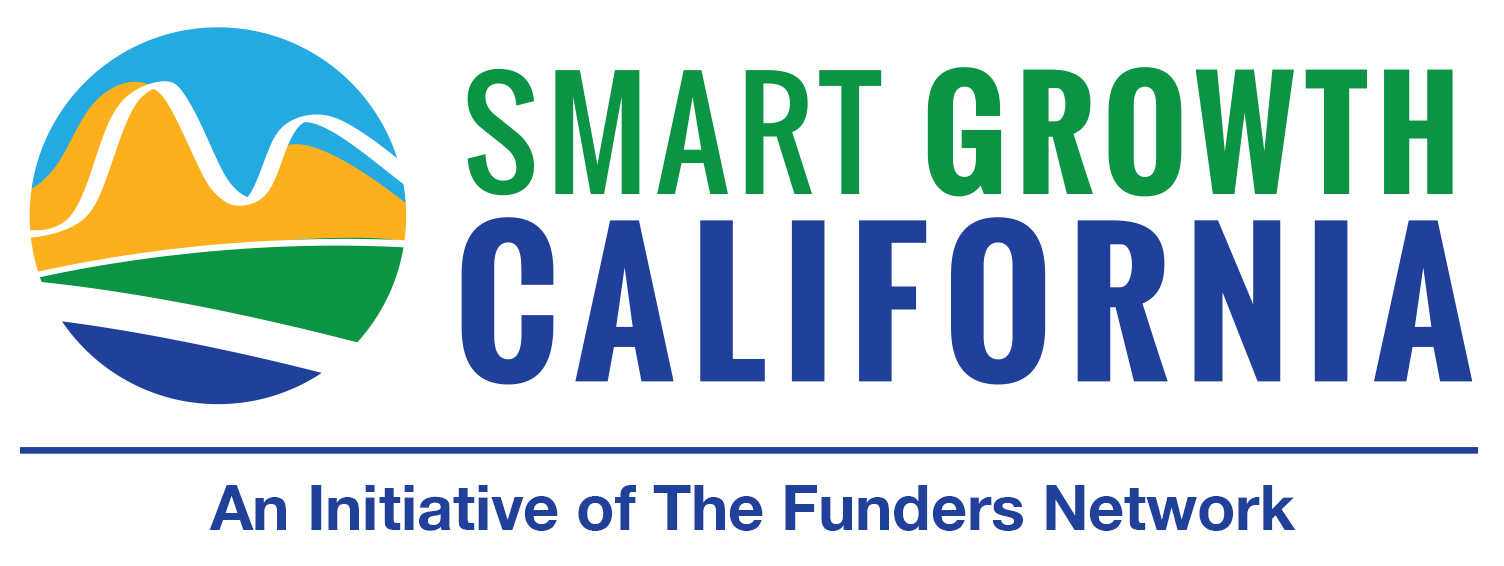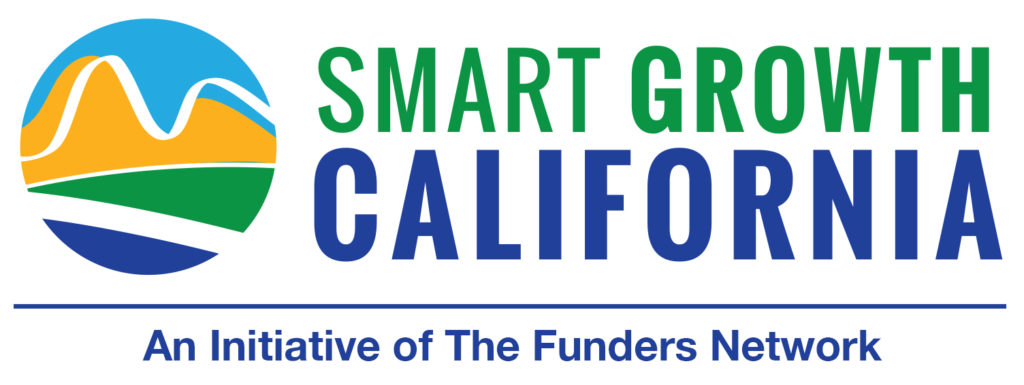For most people, there isn’t an obvious connection between the threat posed by catastrophic wildfire and the traditional focus of smart growth funders around issues related to housing, transportation, and equity. However, it turns out that how communities grow and develop have a significant impact on the scale of the threat associated with wildfires. Without much notice there are millions of people already living in areas prone to fire, and there’s a real risk that this population could surge as the state scrambles to produce millions of units of housing. In the face of a steep climb to produce adequate housing and with many urbanized communities pushing back over how much more housing they will accommodate, there is a real threat that more housing will be pushed to urban periphery and add to the number of people living in fire prone areas described as the wildland-urban interface (WUI). The WUI refers to a zone of transition between wild areas and urban/suburban developments. That brings to mind bucolic communities set out in the woods with limited road access, like Paradise, which was destroyed by the Camp Fire in 2018. However, it also refers to communities like Santa Rosa, which was engulfed by fire in 2017. It’s in that context that Smart Growth California (SGCA) funders are recognizing that “fire is a land use issue that touches and cuts across much of the work that we do as a network and the groups we support,” says Mark Valentine, an SGCA founding Steering Committee member.
On February 11th 2020, over 50 funders, NGO partners and government agency staff from across the state engaged in a deep conversation around the impacts that these fires are having on communities, and how local and state land-use planning decisions have the potential to exacerbate or lessen those impacts.
HOTTER CLIMATE MORE FIRES HOTTER CLIMATE …
Bruce Riordian of UC Berkeley’s Climate Readiness Institute reinforced what is now widely realized: that California’s wildfires are not simply more of the same; recent fires are more intense and destructive than ever and they will keep getting worse. Fifteen of the worst fires ever in California’s history have been in the last 20 years, and with a warming climate, the rainy season is getting shorter and the fire season longer. Fires also add huge amounts of CO2 to the atmosphere, creating a dangerous cycle and worsening our ability to make progress on our climate goals. “A hotter climate leads to bigger and more intense fires,” says Riordian, “which then emit larger emit larger amounts of CO2 which leads to hotter climate.”
The impacts that fires are having are far-reaching. The health implications are great, not only for those living in the fire zone and the first responders, but even those living hundreds of miles away, reached by smoke events. The resulting power shutoffs effect people who depend on the grid, such as for wheelchairs. Fires are dangerously impacting our watersheds and utility infrastructure, not to mention the flora and fauna that are completely destroyed.
On top of this, California’s fires are displacing people in a state that is already in a severe housing crisis. While homes burn, California is still figuring out how and where to build the 3.5 million new homes that are needed. Where will those homes go? With a “quarter of Californians already living in the WUI, and with California’s well-documented challenge of directing development into already urban areas…there is a real concern that more housing will be pushed into the WUI, putting more people at risk,” says Mark Valentine.
COMMUNITY POWER IS LOCAL
The trauma that follows a fire is long-lasting, especially when communities have to grapple with deeply personal and difficult questions, such as how (and if) to rebuild. There are also real equity implications in the aftermath of fire – who has access to insurance, who can afford to rebuild and who is able to leave in the case of a fire or smoke event due to access to a car or other resources. The Latino Community Foundation (LCF), in 2017, heard that the low-income farm workers who were hit by the Sonoma fires were not only dealing with the pains of losing homes and jobs, but were not being invited to the table to help shape the decisions around recovery. LCF raised $2 million to launch a three-phase fund, investing dollars not only for initial recovery but also provided funding for communities to organize around a longer-term vision for their community – dignified jobs, affordable housing and political representation. “Our people and our grassroots organizations are strong and resilient,” says Masha Chernyak of LCF. “Look at how much we’ve already survived, and trust that if we work together we can tackle any challenge.”
Similarly, on the Central Coast, the Santa Barbara Bucket Brigade (SBBB) has found that community resilience is rooted in the power of neighborhoods and organized communities. One of the hardest hit regions in the State, residents of Santa Barbara and the surrounding area have learned that they cannot ask if another fire will hit, but when. Abe Powell, founder of SBBB, is looking not only to build community connection within his own community, but seeing how Santa Barbara can learn from the farm workers of Sonoma and many others. “We need to be networking those communities and collecting the wisdom that comes out of each community, bringing best practices and standardizing solutions when they work,” says Powell.
HOW ABOUT SACRAMENTO?
The State sees its role as a support to local communities in mitigation and resilience land use planning for this new normal. 189 cities and 52 counties have been identified as places within fire hazard zones, and there are many different processes for planning for wildfire that can be confusing. Erik de Kok from the Governor’s Office of Planning and Research says that part of their role is to better support local municipalities in planning and implementing policies from general plans. “We want to make sure they are mutually reinforcing and not in conflict with each other,” says de Kok. State agencies are trying to set an example through their own update to their fire planning document, working across multiple state agencies this year to develop a more coordinated response. On top of that, the Governor’s bold budget proposal has $12.5 billion in the next five years for climate disasters including wildfire, with the Governor’s proposed $4.8 billion Climate Resilience Bond to be voted on this year.
There are many tough questions that remain for funders, partners and government agencies to grapple with. One of the most challenging and difficult areas to find consensus is around land-use and determining where we house people. “We are going to have to start talking about land use because it is critical to increasing or decreasing California’s ability to deal with wildfires and build a more resilient state,” says Bruce Riordian. “Where we put the next ten million people in California will depend on our government’s ability to deal with these issues (fire, drought, heat, sea level rise). Rebuilding and managed retreat are tough decisions and things people don’t want to touch politically right now, but local land use decisions have to be on the table or we are just going to be treating symptoms.”
One thing that does have consensus? Investment and resilience must be rooted in local work. From community resilience to planning for regrowth, new construction and even (dare we say it?) managed retreat, local residents – especially those who are most vulnerable – must be meaningfully engaged in the process of envisioning safe and equitable communities. Residents must also come together across regions to promote smarter land-use in existing urban centers to stop the sprawl, and promote policies that reform land use regulations to restrict, reduce or prohibit development in fire-prone areas. These questions are not easy, and philanthropy has a role to play in bringing together these players to talk about land-use issues and the thorny questions that face communities before the next big fire.
Wildfires will continue to be an issue of growing importance to smart growth funders. If you are interested in continuing the conversation, please reach out to Kerry@fundersnetwork.org.

